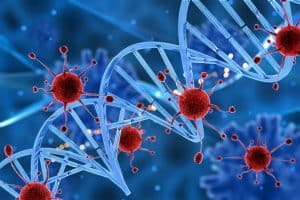The BARF Feeding means Biologically Appropriate Raw Food. Among today’s dog owners, an increasing number are facing health issues affecting their pets. The widespread use of antibiotics, the increasing presence of chronic skin and fur diseases, bacterial infections, leukemia, parvovirus, various liver and kidney diseases, and various malignancies are becoming more common diagnoses. An alternative solution to these problems might be the BARF feeding.
All these issues serve as a warning that the immune system of household pets is becoming more vulnerable, and they are unable to naturally respond to the effects on their bodies. The consensus between responsible conventional veterinary medicine and animal naturopathy is that the primary cause of changes in the immune system lies in alterations in the animal’s diet. One of the factors to examine first is the “fuel” the dog’s body receives.
Amidst the constant buzz of product advertisements, many pet owners forget that their dogs’ ancestors lived in the wild. They hunted, consumed raw meat, and ate raw plants, which shaped their digestive systems. Pet food manufacturers may not like the fact that degenerative diseases and skin issues were less common before their products became widely available.
Most commercially available pet foods contain artificial flavors, colorings, additives, preservatives, and chemicals. These substances are often poorly processed by dogs’ bodies and negatively affect their immune systems.
The Origin of BARF feeding

BARF feeding, therefore, means the consumption of a dog’s diet in its raw form. It involves the preparation of food, either homemade or commercially produced, that aims to resemble what dogs used to eat before becoming our adorable companions in ancient times.
Biologists, geneticists, and veterinarians argue that genetically, dogs are still coded for the dietary habits and nutritional components from the early days of domestication, thousands of years ago. Their teeth, saliva and stomach acid composition and quantity, stomach, and digestive tract still function healthily according to the diet of that time.
The Purpose of BARF feeding
The primary goal of the BARF (Biologically Appropriate Raw Food) diet is to provide dogs with a balanced and diverse range of raw foods, including organic meats and bones, a variety of vegetable and fruit mixes, along with other probiotics and antioxidants.
This is considered successful when the diet closely resembles the natural prey that nourished our pets throughout their evolution.
The BARF diet differs significantly from diets based on leftovers or commercial dog foods. One key difference is the presence of live enzymes in BARF. These enzymes survive cooking, drying, or heat treatment, unlike in processed dog foods. Raw nutrients in BARF, such as vitamins, minerals, and amino acids, remain in their natural form. This is not true for mass-produced commercial diets.
These natural elements promote the well-being of dogs. They improve digestion, boost the immune system, support metabolic processes, and help with cellular regeneration. As a result, a raw diet enriched with live enzymes can contribute to the longevity of our beloved pets.
Advantages of BARF Feeding
Experiences with the introduction of the BARF diet are shared among dog owners on mailing lists and forums, and interested individuals gain insights into these experiences.
The most common changes reported include:
- The dog no longer has a “doggy smell.”

- Chewing and tearing of bony, cartilaginous, larger meat pieces act as a natural toothbrush, strengthening jaw, neck, and shoulder muscles.
- During chewing, the stomach prepares for digestion, producing digestive juices.
- Firmer, less frequent stools.
- Reduced veterinary costs.
- Raw diet is cheaper than canned or dry food.
- Balanced, more even development of puppies, without the rapid growth that stresses bones and joints.
- Prevents the dog from gulping or choking on food. Slower eating is promoted when chewing is required.
- Previously lethargic dogs become more active, energetic, and agile.
- Allergic symptoms disappear.
- Significant reduction or elimination of joint inflammation and pain.
- Maintains a healthy weight in dogs.
- Eliminates unpleasant dog odors.
- Longer life expectancy.
- Female dogs handle pregnancy better.
- Enhanced coat quality.
Oppositions and Disadvantages
Naturally, opposing views exist regarding BARF feeding. For example, millions of dog owners have always believed that industrially produced “complete” or “premium” foods are best for their dogs. On the other hand, some dog owners, lacking knowledge, feed their pets cooked kitchen leftovers and may find it hard to embrace this change.
From an animal health perspective, skeptics often mention risks such as constipation, diarrhea, esophageal injuries from bones, or deficiencies in calcium, zinc, and iodine. However, these issues arise only when the BARF diet is improperly prepared, with incorrect proportions or an unbalanced mineral composition. Often, owners overlook the early signs of mineral deficiencies.
Another concern is the possible presence of intestinal worm larvae in raw meat. This risk depends on the conditions in which livestock are raised and processed. Hygiene and the technical quality of slaughterhouses and butcher shops also play a role. Regular deworming can further minimize this risk.
BARF feeding and Infections
Some people argue that BARF feeding may increase the risk of infections transmitted from animals to humans. However, in today’s enlightened approach to animal care, the risk is much lower than it was 2-3 decades ago. No statistical study has proven this theoretical risk to be a real danger. In fact, it is proven that a dog’s digestive system destroys salmonella and other foodborne bacteria.
Critics often compare their dog’s mostly vegetarian-like eating habits to wolves or dogs. They ignore recent studies on wild wolves. These studies show that wolves eat herbivorous prey stomach contents, along with forest fruits, herbs, roots, grasses, insects, and feces.
Pet food manufacturers claim their products provide all the nutrients dogs need daily. However, you don’t need to give all nutrients daily. Some substances work better when given weekly or monthly, as this aligns more closely with a dog’s natural rhythm.
Living in a fast-paced world, some find it difficult to prepare a proper BARF diet daily. However, with frozen meats, by-products, and commercial grain products, it becomes easier. Using vegetables and fruits from households and gardens makes feeding a healthy BARF diet simpler than expected.
Tips and rules
Recommended Composition for One Serving:
- 40% raw meaty bones (hindquarters, neck, beef brisket)
- 30% raw vegetables-fruits (finely chopped carrots, lettuce, zucchini, apple, banana)
- 30% raw meat (chicken, beef, lamb, rabbit)
- The quantity of food = 2% of the adult dog’s body weight per day
- Divide the food quantity into two portions to be given to the dog daily
- Best Dietary Supplements: Green-lipped mussel powder
- Every 3 days, in place of meat, an equal amount of liver, heart, and kidney can be provided
- 1-2 teaspoons of yogurt, low-fat cottage cheese, olive oil can add variety to the diet
- Recommended the use of dandelion flower oil, olive oil, flaxseed oil, and evening primrose oil
- Once a week, 50% of the meat portion can be raw fish
- 1-2 boiled or raw eggs, crushed with their shells, can be included in the diet weekly (excellent source of protein, vitamins, minerals, and calcium carrier)
- Dandelion, sage leaf, lemon balm, mint leaf, blackberry leaf, raspberry leaf, nettle, dill, parsley, and chamomile can serve as spices and flavorings
- For Dogs Initially Reluctant to Eat Vegetables: It is advisable to grind the meat portion and mix vegetables into it, or flavor with a small amount of tuna or liver
- You can substitute oats, barley, millet, rye, corn grits, or grated coconut (or their flake versions) for 50% of the vegetable quantity once a week. Mix them with yogurt, goat milk, or carrot juice.
- Avoid including tomatoes, onions, avocados in the diet, as all of these contain a toxin called ‘solanine,’ which is harmful to the dog’s digestive system
- Include a small amount of boiled potatoes only in cooked form in the diet
Fundamentally,
for the nutrition of dogs with cancer, it is highly recommended to revert to natural feeding, essentially the BARF diet. If you’re interested in more dog-related topics, check out our articles on Weight Pulling, where strength and teamwork come together. Learn the important steps in Choosing a Puppy to ensure a great start for your new companion. Understand the causes and prevention of dysplasia and the impact it can have on your dog’s mobility. Stay informed about lymphoma and how to spot early signs of this common canine cancer. Finally, don’t miss our guide on Anal Glands and how to keep your dog comfortable and healthy.


